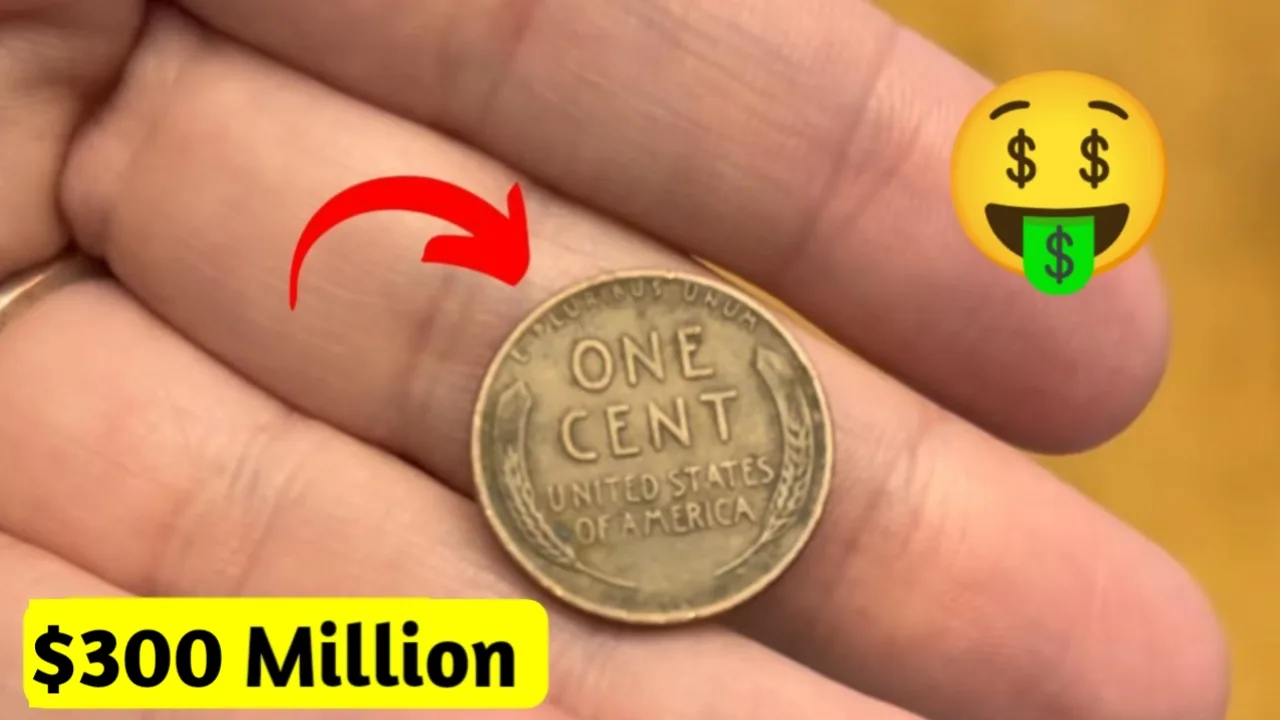The Lincoln Wheat Penny Valued at $300 Million, Still in Circulation?
Rumors about a Lincoln Wheat Penny supposedly worth a staggering $300 million have sparked curiosity among coin collectors and everyday people alike. The idea that life-changing wealth could be hiding in spare change is certainly thrilling. However, the truth behind these valuable pennies is both less extravagant and more genuinely fascinating. While no Lincoln penny has ever sold for hundreds of millions, a few extremely rare examples have fetched substantial sums, making them well worth the attention of collectors.
A Coin Rooted in American History
The Lincoln Wheat Penny made its debut in 1909, introduced to honor the 100th birthday of President Abraham Lincoln. It was the first U.S. coin to feature a real person’s likeness, with designer Victor David Brenner crafting a noble profile of Lincoln on the obverse. The reverse was framed with two stylized wheat ears and the words “ONE CENT,” a design that remained in circulation until 1958. Over nearly five decades, these pennies circulated through some of America’s most transformative eras—including two world wars, the Great Depression, and the dawn of the Space Age.
What Actually Gives Wheat Pennies Their Value?
Though the $300 million figure is pure fiction, certain Lincoln Wheat Pennies have indeed sold for eye-opening amounts. The record goes to a 1943 bronze penny that sold for $1.7 million at auction. Several key factors influence the value of a penny: rarity (due to low mintage or few surviving pieces), minting mistakes, historical context, and physical condition. Coins labeled as “mint state” or “uncirculated” by grading experts are often worth far more than well-worn ones.
Which Wheat Pennies Are Most Valuable?
Collectors tend to pursue specific dates and variations that stand out due to their rarity. One of the most famous is the 1909-S VDB, minted in San Francisco and marked with Brenner’s initials. Only 484,000 were made before the Mint removed the initials due to public backlash, turning this version into a hot commodity. In top condition, it can sell for as much as $100,000.
Another iconic rarity is the 1943 bronze penny, created by mistake during World War II when pennies were supposed to be minted using steel to conserve copper for the war effort. A few leftover copper blanks were used by accident. Similarly, a rare 1944 steel penny exists—struck on leftover steel blanks from the prior year, adding another valuable variation.
The Famous Double Die Error of 1955
Among the most legendary U.S. coin errors is the 1955 Double Die Wheat Penny. A misalignment during the minting process caused a doubling effect on the lettering and numbers, visible even without magnification. Despite the error being identified early, many of these coins entered circulation. In high-grade condition, these can bring in up to $125,000, making them one of the top prize pieces in the Lincoln Wheat Penny series.
Why Professional Grading Is Essential
If you believe you’ve stumbled upon a rare penny, professional authentication is a must. Reputable organizations like PCGS (Professional Coin Grading Service) and NGC (Numismatic Guaranty Corporation) can certify a coin’s condition and legitimacy. This independent verification helps ensure buyers and sellers get fair market value and reduces the risk of scams. When dealing with potentially high-value coins, never rely on guesswork or unverified claims—especially when prices seem too good to be true.
Coin Collecting in the Digital Era
The internet has drastically changed how people collect and trade coins. On the positive side, knowledge is more accessible than ever, and collectors can easily research or purchase coins online. But there’s also a downside: myths—like the $300 million penny—can spread quickly, misleading collectors. Online marketplaces have made buying and selling easier, but they’ve also created more opportunities for fraud. Today’s collectors must do their homework and approach “too good to be true” claims with healthy skepticism.
The Ongoing Search for Hidden Treasures
Despite the exaggerated headlines, hunting for valuable Lincoln Wheat Pennies remains a popular and rewarding activity. Some collectors still find hidden gems in old coin jars, inherited boxes, or even loose change. As society becomes more cashless, physical currency like the Wheat Penny is becoming rarer in everyday life, which could increase the value of those still in existence. Whether you’re just starting out or are a seasoned numismatist, the search can be both exciting and meaningful.
More Than Just Monetary Value
While discovering a valuable penny is exciting, many collectors find deeper meaning in their coins. Lincoln Wheat Pennies serve as small but powerful artifacts, offering a glimpse into America’s past. From changes in coin production to the economic and cultural shifts of the 20th century, each coin tells a story. For many, the historical insight and personal connection to earlier generations matter more than the possibility of cashing in on a rare find.
Disclaimer:
This article is intended for informational purposes only. Coin values can fluctuate with the market and are best confirmed by certified numismatic professionals. While stories of ultra-valuable coins can be intriguing, the odds of finding a multimillion-dollar specimen are extremely slim. Coin collecting should primarily be pursued as a hobby and educational endeavor, not a guaranteed investment opportunity.











